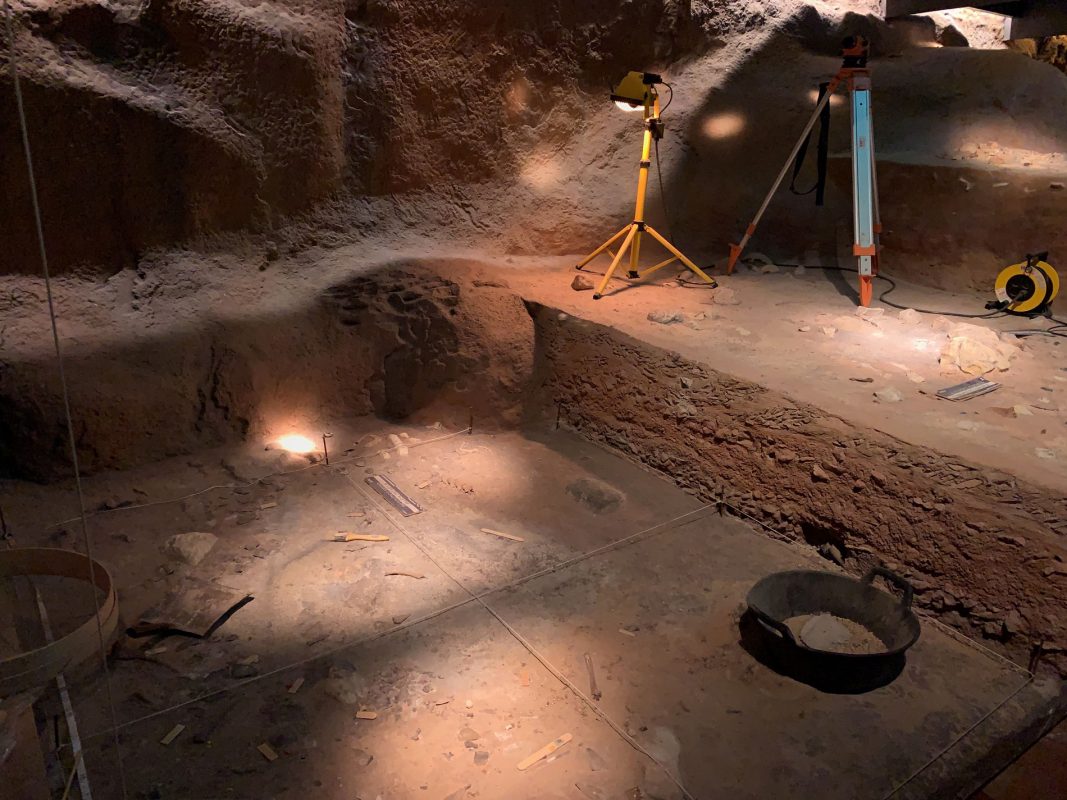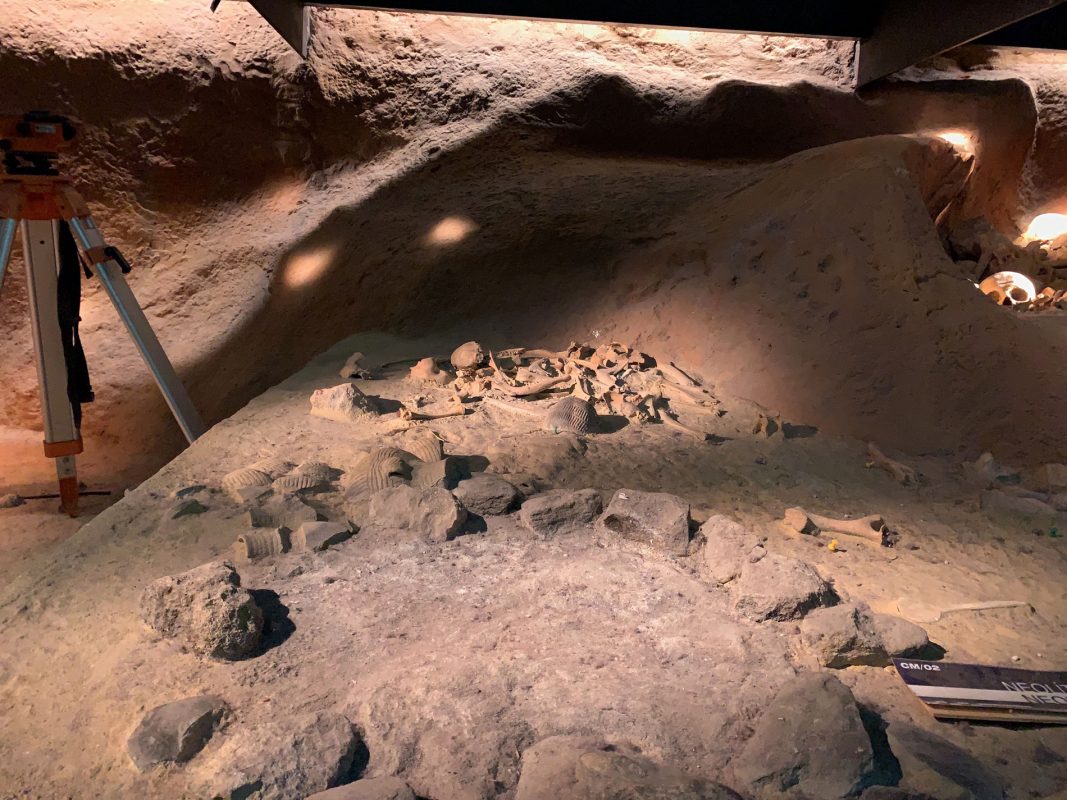MARQ and its Thematic Galleries
FIELD ARCHAEOLOGY GALLERY
This gallery recreates the processes involved in excavating a cave.
The recreated cave scene does not represent a specific site but brings together elements and features from a number of different cave sites found in the Province of Alicante.
You can see four different surfaces or horizontal layers that were occupied by people at different periods in the past. On the surface of each of these layers are the archaeological objects that belong to this period. On the two earliest surfaces (the lower layers) there are mainly Palaeolithic stone tools. On the third there are fragments of Neolithic pottery, and on the last (the uppermost layer) there are remains of metal objects (Bronze Age).
This has been laid out in this way to show you that the oldest layers in time are the lowest layers in the ground, as they were laid down first. The more recent ones are above, nearer to the modern day surface.

Match each tool with its photo. , download the exercise and put the number in the right box
1. LEVEL STAFF: Standard measuring staff with large sized numbers so that it can be clearly seen using the dumpy level.
2. DUMPY LEVEL: Instrument to take height measurements.
3. TROWEL: A very useful triangular shaped tool used to dig and remove earth.
4. HAND PICK: Small pickaxe used to dig and remove earth.
5. PLUMB BOB: Metal weight attached to the end of a string which hangs vertically down due to gravity creating a reference line.
6. SIEVE: A mesh used to sieve the soil to find small archaeological fragments or samples.
7. METRIC SCALE: A red and white coloured scale used for photographs.
8. CONTEXT SHEETS: Forms used to record the details of the different archaeological features and layers. They include sketches and plans.
9. BRUSH: Used to clean the earth covering the finds during excavation.
10. BUCKET: Durable container used to remove excavated soil from a site.
Read the following information:
On the cave wall (seen from the walkway) there are reproductions of rock paintings from different Prehistoric periods.
There are two plasma screens that explain in detail what has been found in each layer and the tools used during the excavation.
A monitor describes the different tasks that are carried out by the archaeologists in the field (excavation, gathering samples, sieving the soil) and in the laboratory (cleaning, labeling and drawing the finds).
An audiovisual is projected on a large screen recreating Alicante’s changing landscape through time. The film is set in a cave and takes us on a journey through time from the most remote prehistory, before humans arrived (with animals which are now extinct) to the present day.




 Español
Español VAL
VAL
